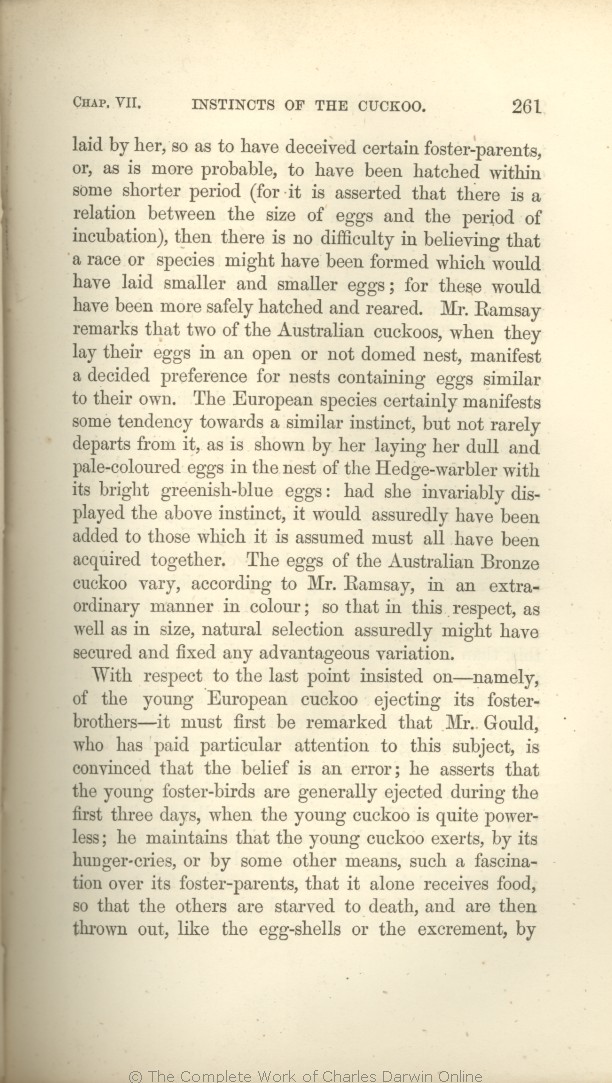laid
by her, | by her, 1866 | by her, 1869 1872 |
| of eggs 1866 1872 | of eggs 1869 |
| incubation), 1866 1869 | | their incubation), 1872 |
| or not domed 1866 |
| OMIT 1869 1872 |
| to 1866 |
| in colour to 1869 1872 |
| certainly 1866 1869 | | apparently 1872 |
| eggs: 1866 | | eggs. 1869 1872 |
| had she 1866 |
| Had our cuckoo 1869 1872 |
| manner 1866 | | degree 1869 1872 |
| assuredly 1866 1869 | assuredly 1872 |
| 3 blocks not present in 1859 1860 1861 1866 1869; present in 1872 | | In the case of the European cuckoo, the offspring of the foster-parents are commonly ejected from the nest within three days after the cuckoo is hatched; and as the latter at this age is in a most helpless condition, Mr. Gould was formerly inclined to believe that the act of ejection was performed by the foster-parents themselves.
But he has now received a trustworthy account of a young cuckoo which was actually seen, whilst still blind and not able even to hold up its own head, in the act of ejecting its foster-brothers.
One of these was replaced in the nest by the observer, and was again thrown out.
|
|
With
respect | respect 1866 | | reference 1869 |
| last point insisted on— namely, of the 1866 |
| OMIT 1869 |
| fosterbrothers— 1866 | | foster-brothers— 1869 |
| power less; 1866 | | powerless; 1869 |
|









